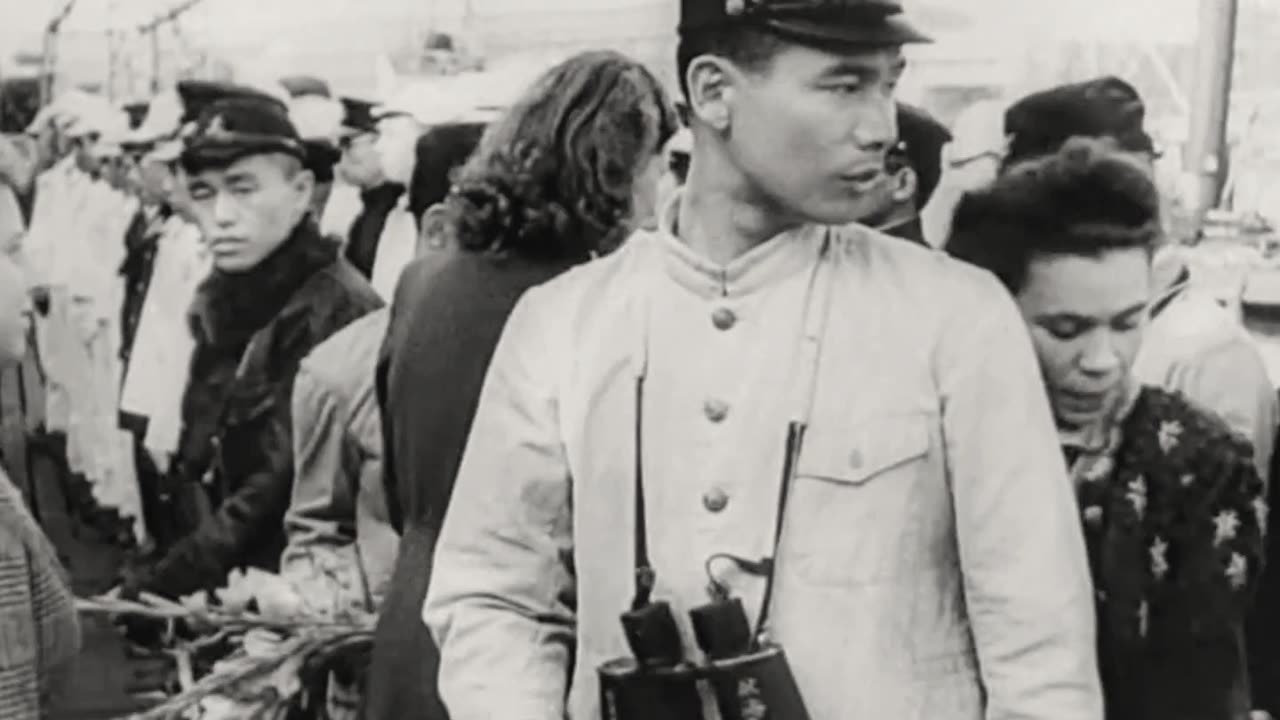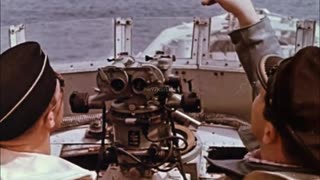Premium Only Content

I-30 arrives in occupied France as the first Japanese submarine to arrive in Europe in WWII
I-30 was a Type B1 submarine of the Imperial Japanese Navy during World War II. After operating in the Indian Ocean she participated in a Yanagi mission, aimed at connecting Japan and Nazi Germany by submarine. She was the first Japanese submarine to reach Europe, arriving at Lorient, France in August 1942. I-30 returned to Singapore loaded with military technology and information, but hit a mine outside the harbor and sank. Only part of her cargo was salvaged.
In mid-June 1942 I-30 was sent on a Yanagi mission to Europe, rounding the Cape of Good Hope and entering the Atlantic en route to France. On 2 August she arrived in the Bay of Biscay and was escorted into Lorient by a powerful force of German M-class minesweepers and Luftwaffe Junkers Ju 88 bombers. I-30 was the first Japanese submarine to arrive in Europe during World War II.
The officers and crew of I-30 were greeted by Grossadmiral Erich Raeder, Admiral Karl Dönitz, and Captain Yokoi Tadao, the Japanese Naval Attaché to Germany. The officers and crew of I-30 were feted by their German allies, travelling to Berlin where Commander Endo was presented to Adolf Hitler, and returning to Lorient via a sightseeing trip to Paris. In the meantime the I-30's cargo of 1,500 kg (3,300 lb) of mica and 650 kg (1,430 lb) of shellac was unloaded. They also supplied the Germans with blueprints of the Type 91 aerial torpedo. In return I-30 was repainted U-boat grey and fitted with a Metox radar detector and a Flakvierling 38 quad 20 mm AA gun, replacing her Type 96 25 mm AA guns.
I-30 departed Lorient on 22 August carrying a Japanese engineer as a passenger. Her cargo included blueprints and a full set of the Würzburg air defense ground radar, five German G7a and three G7e torpedoes, five Torpedovorhalterechner (torpedo data computers), 240 Bolde sonar countermeasure rounds, rocket and glider bombs, anti-tank guns, a Zeiss anti-aircraft artillery director (fire control system), two hundred 20 mm AA guns, industrial diamonds valued at one million yen, and fifty Enigma T coding machines.
On 8 October 1942 I-30 arrived at Penang to refuel and replenish, then sailed for Singapore, arriving early on the 13th. Just after 4 p.m. the same day, she departed for Japan, but three miles east of Keppel Harbor hit a British mine and quickly sank with the loss of 13 men. Divers from No. 101 Navy Repair Unit recovered some of her cargo, including most of the 20 mm guns, torpedo data computers, and the radar blueprints, though they were found to be unusable after their immersion in salt water. The radar equipment was completely destroyed.
-
 1:11
1:11
hw97karbine
1 month agoOriginal color footage featuring Kriegsmarine "Schnellboote" torpedo boats
751 -
 LIVE
LIVE
Lofi Girl
2 years agoSynthwave Radio 🌌 - beats to chill/game to
266 watching -
 24:30
24:30
DeVory Darkins
14 hours agoMarjorie Taylor Greene RESIGNS as Minnesota dealt MAJOR BLOW after fraud scheme exposed
66.5K112 -
 2:19:48
2:19:48
Badlands Media
1 day agoDevolution Power Hour Ep. 409: Panic in the Narrative — Epstein, Israel, and the Manufactured Meltdowns
156K41 -
 1:52:38
1:52:38
Man in America
11 hours agoCommunists VS Zionists & the Collapse of the American Empire w/ Michael Yon
65.3K30 -
 4:09:34
4:09:34
Akademiks
6 hours agoSheck Wes exposes Fake Industry. Future Not supportin his mans? D4VD had help w disposing his ex?
39.6K3 -
 6:43:43
6:43:43
SpartakusLIVE
10 hours agoTeam BUNGULATORS || From HUGE WZ DUBS to TOXIC ARC BETRAYALS
113K3 -
 2:44:56
2:44:56
BlackDiamondGunsandGear
6 hours agoAre You that guy? / Carrying a Pocket Pistol /After Hours Armory
25.6K -
 5:41:59
5:41:59
Camhigby
6 hours agoLIVE - Riot Watch Portland, DC, NC
28.5K20 -
 2:54:58
2:54:58
CAMELOT331
8 hours agoYouTube Just Told Me I OWE THOUSANDS $ TO THEM... update
34.3K5